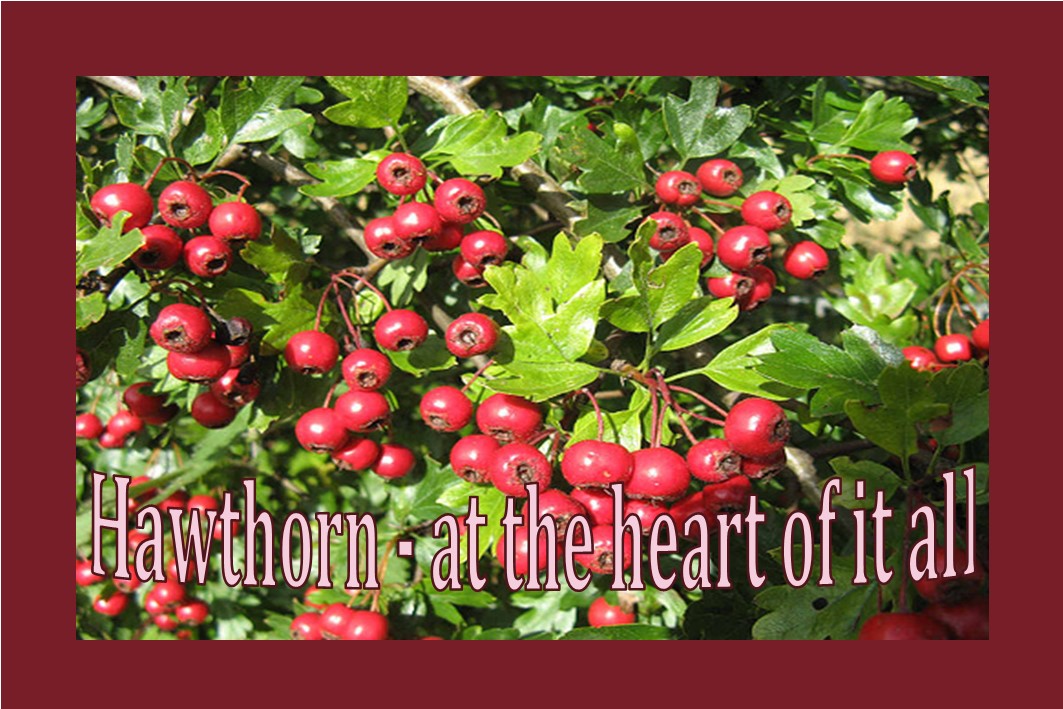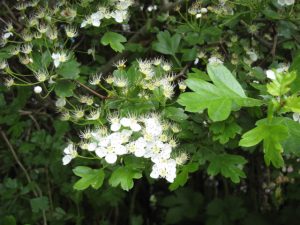
It’s September and the hawthorn berries are looking glorious. Plump and juicy. Time to get picking.
History and folklore
Hawthorn is ominous and magical, holy to Pagans and Christians. Scottish farmers traditionally harvest 13 weeks after the blossom scents the air. It’s gorgeous and heady. ‘Cast ne’er a clout til the May be out’ – refers to remaining dressed for winter until the mayflower (or hawthorn) blossoms. Rather wonderfully, if you have hawthorn in your perimeter hedging, it will ward off the bad faeries. And, who doesn’t need a bit of protection from them in their life!?
Identifying hawthorn
But what about the berries? There are a few types of hawthorn and one way to tell the difference is in the stones inside the fruit. Crataegus monogyna has a single seed, Crataegus leavigata has more and the cross between the two plants, Crataegus oxyacanthoides usually has more too. However, for once, this distinction is more important to botanists than herbalists as we can use them all. Hurrah!
The medicine
Some of the best medicine comes from mixing the flowers, leaves and berries together. In order to do that, you have to pick them at different times. So, in September, it is the time of the berries. You can allow them to dry by laying them on a sheet of paper in a very dry, warm place such as an airing cupboard or use a dehydrator.
The flowers have a distinct almondy taste to them. This indicates the presence of constituents which are known to be active on the heart. Harvest these with the new leaves in May. Herbalists generally like to make two hawthorn medicines (leaf and flower / berries) and sometimes blend them together.
Why use hawthorn?
Herbalists use hawthorn for heart conditions in order to encourage a greater flow of blood through the heart, to strengthen and slow the heart beat without raising blood pressure. It is said that sportsmen use it as it may enhance exercise duration. It has a very low incidence of side effects and has no known contraindications. Always preferable in a medicine.
Seeking help
There are many more ways to use hawthorn which are best done with a medical herbalist. Those conditions range through arteriosclerosis, atheroma, thrombosis, angina, tachycardia, atherosclerosis and intermittent claudication. If you suffer from any of these get in touch with a herbalist and see if you work well together.
Just for fun
I made a rather tasty Hawthorn vodka (as per Sloe Gin) which has the distinct notes of almonds which indicate the presence of constituents which work with your heart. However, this is purely an occasional drink, not a medicine – there’s way too much sugar which is renowned for damaging the cardiovascular system.
Notes: None of the information included here is intended as medical advice. Please seek help from a medical herbalist when using herbs for serious, life affecting conditions. Foraging is fun so don’t forget to leave plenty behind. Pick only what you will use and pick no more than 10%. Wildlife depend on wild foods to survive.
